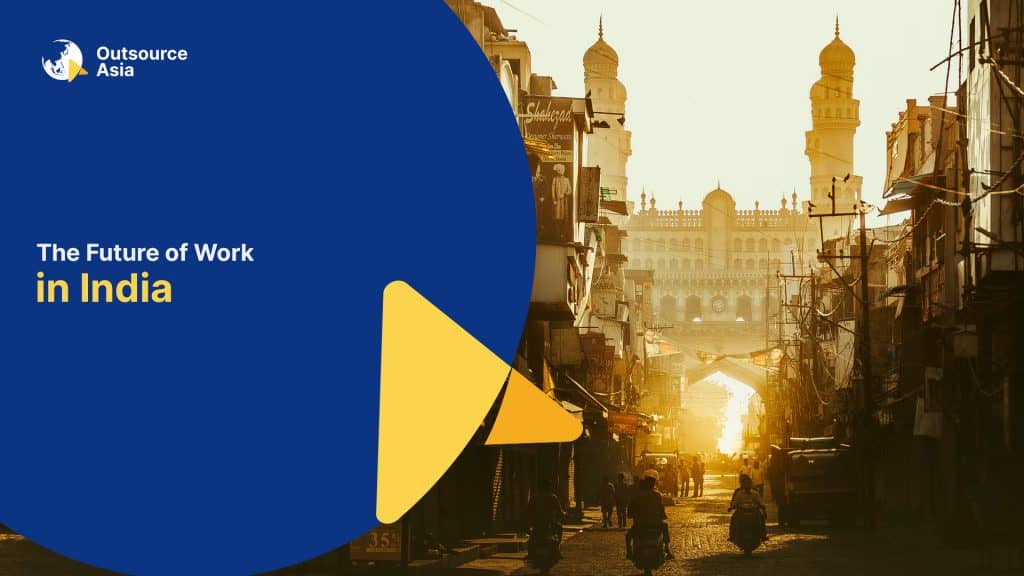
The Future of Work in India
This article on the future of work in India examines aspects of the post-pandemic era, ranging from the overall status of the local labor market up to the long-term influence on consumer consumption and business recovery. See how organizations respond towards the impact of automation and technology on job availability and employment growth in the new normal. There is also assessment on commitment to gender equality, diversity, and inclusion as well as decisions by policymakers and business leaders on aspects of cybersecurity management and data and privacy protection.
Status of Local Labor Market
The Indian local labor force in 2020 is comprised of at least 470,000 workers from ages 15 and older, according to World Bank. This figure included both currently employed, first-time job seekers, and people actively searching for work but did not include unpaid workers, students, and seasonal workers. There is a 7.0% unemployment rate during Q4 2021, slightly higher than the 6.9% unemployment rate during Q1 2021 but still a more promising recovery from the 24% unemployment rate in Q2 2020.
As the country gradually recovers with the easing of restrictions following a decline in Omicron cases, the unemployment rate has fallen to 6.57% in January, which is the lowest since March 2021, according to the Centre for Monitoring Indian Economy (CMIE).
“This sounds very good. But, there is a twist. The fall in the unemployment rate did not arise out of 6.6 million people getting jobs. They, rather disappointingly, just stopped looking for jobs. As a result, they were no longer counted as unemployed and were out of the labor force,” CMIE MD and CEO Mahesh Vyas said. The challenge now, according to Vyas, is to find job opportunities for millions of unemployed people but prepared to work if opportunities arose, even though they were not actively looking for work.
On the other hand, the labor participation rate (LPR) was at a record low of 40.41% at the start of Q4 2021, mainly attributed to the two pandemic shocks. This is a significant fall from the 46.3 % LPR in Q4 2020 and 49.3 % LPR in Q4 2019 – much lower than global levels. According to CEIC Data (Computer and Enterprise Investigations Conference), the figure has been updated regularly since 1990, with data at an all-time high of 57.5% in Q4 1990.
But what remains an enduring puzzle is why India’s employment rate continues to drop despite having its national output creeping back to pre-pandemic levels. At around 42% lately, as per ILO data in Q1 2022, this is the lowest among all comparable Asian economies, including Indonesia, the Philippines, and Vietnam.
One reason for the low LPR is that women’s employment is atrociously low, particularly in sizeable Hindi belt states like Uttar Pradesh and Bihar. The LPR among women in this city is in the single digits. This means that almost 90% of women are entirely unemployed.
Another reason for the low LPR is the marked deterioration in the quality of employment in various industries, which leads to almost 53% choosing self-employment. More than one-third of the self-employed population are unpaid workers who support their household enterprise.
“Policymakers should do a more honest analysis of not only India’s abysmally low participation in the labor force but also the quality of employment and income of those who are in the active labor force,” CMIE MD and CEO Mahesh Vyas said.
Consumer Consumption and Business Recovery
According to a survey by global consultancy and advisory firm Deloitte, Indians are slowly returning to work, and the country is seeing a consumer rebound, with spending intent shifting toward more discretionary items.
A new surge of confidence among Indian customers has been ushered in by the decreasing number of COVID-19 cases as well as a vigorous vaccination campaign, the survey revealed. Indian consumers are willing to spend more on discretionary items, feel secure about returning to work, and want to spend on tourism. Furthermore, according to the report, they are less hesitant to participate in in-person events and activities, which are all favorable indicators for India’s economic recovery.
Some of India’s biggest lenders and shadow financing firms assist on everything from garments to two-wheelers and homes, raising optimism for a consumption-driven recovery in Asia’s third-largest economy. This is partly because these institutions are sitting on a large pile of cash and are willing to lend. On the other hand, borrowers seek to take advantage of historically cheap interest rates, a strengthening job market, and a brighter economic outlook as vaccinations become more widespread.
On the other hand, many companies have halted their return-to-work plans and reevaluated. The government, therefore, must focus on implementing business recovery policies that would ensure a conducive business environment for both big corporations and MSMEs. Resumption of economic activities will hinge on the following factors:
- embracing a modified, hybrid model that enables businesses to surpass the restrictions
- re-classification of what is considered essential and non-essential goods, products, and services for various consumers
- approval of more extended repayment periods, more favorable interest rates, and debt guarantees to improve market confidence and ensure lower cash outflows
- reducing the isolation of individual MSMEs and improving cluster competitiveness
- promoting the use of digital platforms as well as accelerated adoption of automation, artificial intelligence, and machine learning to improve the quality of goods, products, and services
- Strengthening local health preparedness of the red-zone ones or locking down only the containment zones, not entire districts, in line with Ministry of Home Affairs (MHA) guideline
- Operationalizing the safe and controlled movement of labor between urban and rural areas, as well as within cities, while developing contingency plans based on scenarios of potential COVID-19 impacts
Commitment to Gender Equality, Diversity, and Inclusion
Women workers in India have suffered the strongest gender bias across the Asia Pacific countries, according to the LinkedIn Opportunity Index 2021. Indian companies still exhibit a favorable bias towards men at work, while women miss out on a raise, promotion, or work offer because of their gender. The report also revealed that more than seven in 10 working women (71%) and working mothers (77%) feel managing family responsibilities comes in the way of career development. Two-thirds of working women (63%) and working mothers (69%) also say they faced discrimination at work due to familial and household responsibilities.
Transformative change for Indian women in the world of work will only be possible by tackling these four key areas:
- to decrease the enormous disparity between women’s and men’s unpaid care responsibilities and to allow a more flexible approach to working hours and careers
- to enhance women’s access to the labor market as well as higher skilled and better-paid jobs and opportunities
- to punish gender-based violence and harassment, including sexual harassment
- to support women’s voice, representation, and leadership in businesses across industries
As for joining the diversity and inclusion bandwagon, India is still struggling to navigate and understand the real meaning of inclusive workplace culture. The global pandemic has re-energized these concepts – but organizations must be more proactive in promoting an open and inclusive work environment by removing the stigma and discrimination barriers. This includes accessing new talent pools to include workers with disabilities, workers from disadvantaged economic backgrounds, and the LGBTQ community. There’s also a need to educate employees across all levels, addressing any biases toward others who are not like them.
India still has a long way to go to be in a place where it’s an equal world but looking at the $223 billion business losses from workplace turnover due to culture-related issues between 2016 and 2021, now is the best time for Indian companies to put gender equality, diversity, and inclusion on the corporate agenda.
Learn more about how Outsource Asia can help your organization embrace the future of work.


